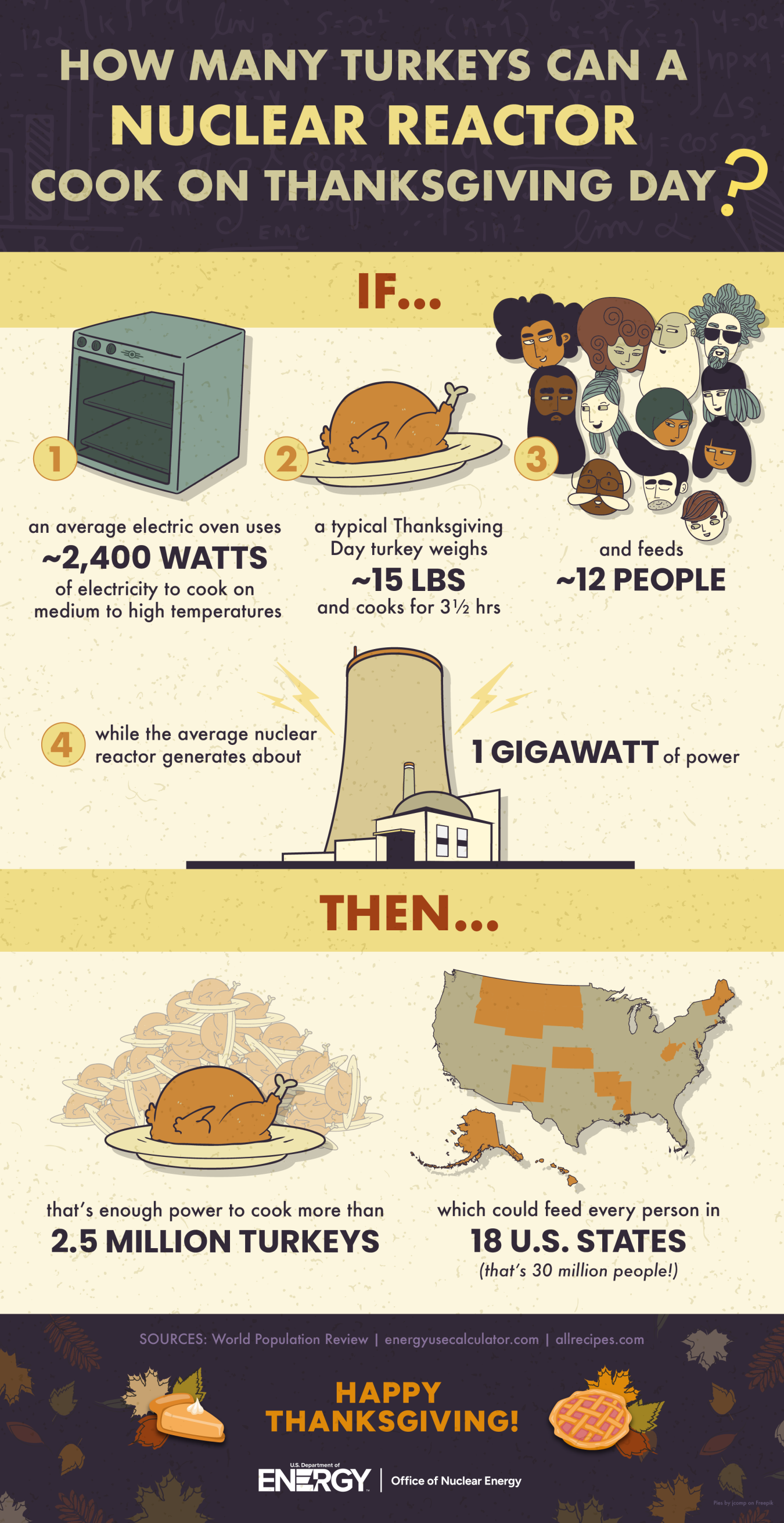A typical nuclear reactor can provide enough power to cook around 2.5 million turkeys on Thanksgiving Day.
November 27, 2024It’s the question everyone wants to know but never had the courage to ask at the Thanksgiving Day dinner table.
How many turkeys can a nuclear reactor cook on Thanksgiving Day?
Luckily, this question for the ages can be easily broken down. Let’s do some math!
The Stats
A quick internet search reveals the average Thanksgiving Day turkey weighs around 15 pounds and feeds about 12 people.
A 15 pound turkey takes about 3.5 hours to cook at 350 degrees Fahrenheit.
A conventional oven uses around 2,400 watts on medium to high heat. For this scenario, we use an average oven consuming 2,400 watts for 3.5 hours.
A typical nuclear reactor produces around 1 gigawatt of power, which is 1,000 megawatts or 1,000,000,000 watts.
The Math
Using the stats above, one nuclear reactor can power 416,666 ovens continuously.
(1,000,000,000/2,400 = 416,666)
But, nuclear reactors operate 24 hours a day / 7 days a week to provide clean and reliable power. So, if we divide 24 hours by 3.5 hours and then multiply that by the total number of ovens, the actual total would be 2,857,138 turkeys!
(24 hrs. / 3.5 hrs.) x (416,666 ovens) x (1 turkey/oven) = 2,857,138 turkeys!
With us so far?
Here’s where it gets a little tricky. Since 24 hours divided by 3.5 hours is 6.8, the last batch of turkeys wouldn’t be done on Thanksgiving Day. This means we had to round down to 6. (see math below)
(6) x (416,666 ovens) x (1 turkey/oven) = 2,499,996 turkeys).
So, a reactor operating at full power on Thanksgiving Day would provide enough power to cook around 2.5 million turkeys on Thanksgiving Day and feed 30 million people (each turkey feeds around 12 people). That’s enough food to feed everyone in the states of Wyoming, Vermont, Alaska, North Dakota, South Dakota, Delaware, Rhode Island, Montana, Maine, New Hampshire, Hawaii, West Virginia, Idaho, New Mexico, Kansas, Mississippi and Arkansas!
On second thought, just check out this infographic!
This blog was originally posted on November 26, 2020 and has since been updated.




